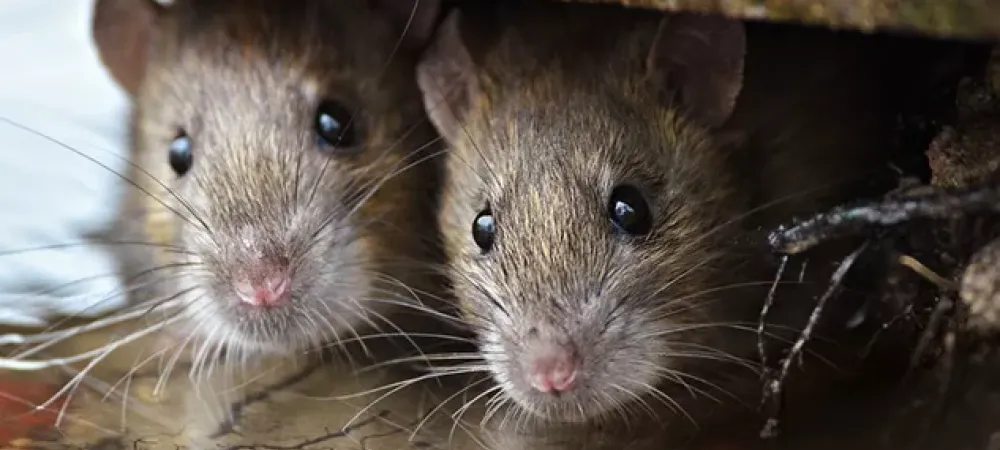4 Popular Rodent Hot Spots In Your Home

With autumn in full swing, it’s a beautiful time to head outside, watch the leaves change, and take in the crisp air before winter hits. But as you enjoy the great outdoors, rodents are seeking the great indoors, the inside of your home.
Every fall, rodents seek shelter inside so that they can hibernate throughout the cold winter months. And if you’re not careful, your home could be their next rodent Airbnb.
So we’re going to discuss four popular rodent hot spots in your home you should be on the lookout for so that you can make sure no unwanted visitors are living under your roof rent-free.
The Kitchen
Rodents are attracted to the smell of food, so it shouldn’t come as a surprise that 50% of rodent infestations happen in the kitchen. And when rodents are foraging for food, they will leave no plate unturned. Cupboards, appliances, and even pet food bags are all fair game.
But you don’t have to fall victim to rodents eating you out of house and home. There are a variety of different scents you can use in your kitchen to deter these pesky creatures, including:
- White vinegar – Make a quick cleaning agent by filling a small spray bottle with a half white vinegar & half water mixture. This is a great way to keep your countertops sparkling, kill off bacteria, and turn off rodents with their pungent smell. Just beware of using vinegar on granite countertops, as the acid can wear through the stone.
- Mothballs – While they may remind you of your grandmother’s house, mothballs are a great and inexpensive mouse deterrent. If you plan on using these as a long-term strategy, be sure to replace the mothballs every 3 – 6 months.
- Ammonia – Found in many cleaning agents, ammonia is a highly effective means of repelling mice. They’ll mistake its smell for a predator’s urine, feel threatened, and keep away.
- Peppermint – Peppermint oil gives off a strong scent that will keep rodents at bay. It’s best applied on cotton balls and placed in jars throughout the kitchen. Just be sure that you use 100% peppermint oil, and not an extract, as an extract won’t have the same repelling effect.
The Living Room
After mice have sufficiently gorged themselves on kitchen scraps, they are not shy about nestling up in your furniture for a nap, and couch cushions are an ideal place to do this.
Not only are they cozy, they often contain many tasty scraps from the kitchen. And according to the National Pest Management Association, one in four mouse encounters take place in the living room.
So if you’re worried about mice getting cozy under your favorite comforter, start adhering to a cleaning routine. Clear away clutter, vacuum regularly, and keep the room free of as many potential hiding spots and food sources as possible.
The Basement
But mice are by no means restricted to the above-ground areas of your home, and basements are also a popular hangout for rodents. Often used as storage space for furniture, holiday decorations, and other items that aren’t used on a daily basis, basements create many opportunities for rodent nesting, not to mention large appliances such as washers and driers that can provide the desired shelter.
So if you suspect these unwanted pests have made themselves comfortable where you launder your unmentionables, there are a couple of steps you can take.
Start by creating a more well-lit environment; rodents thrive in the darkness where they can hide from view but have a much tougher time doing so in well-lit areas. You’ll also want to remove excess moisture as much as possible by repairing any leaky pipes to prevent mold and moisture, which will attract rodents. A dehumidifier may also be necessary if it’s difficult to keep dampness at bay.
Wall Interiors
Since rodents prefer nesting in hidden areas in the home, wall interiors make ideal hiding places. In fact, they can live quite comfortably out of sight for long stretches of time unbeknownst to many homeowners. And while hidden from view, rodents can cause significant damage to the foundation and interior of your home, gnawing away at electrical wires and creating a fire hazard, chewing through insulation, drywall & wood, and leaving behind droppings.
In fact, your home could be deteriorating right underneath your nose without your knowledge, so it’s incredibly important that you’re aware of what to look out for. You can learn more about the signs of an infestation by downloading our free rodent detection guide. This easy-to-read guide will tell you everything you need to be aware of so that you can spot a rodent problem before it persists and keep your home protected.
Here’s to a safe, rodent-free winter ahead!
